- Ventilation
- Posted
Dynamic Ducting

Heat recovery ventilation, a technology that has become a standard building application in Scandinavian countries, is rapidly gaining recognition in Ireland as a solution to both problems.
The performance of Irish buildings has been blighted for too long by failure to deal with our damp climate, combined with massive, avoidable heat loss. Heat recovery ventilation, a technology that has become a standard building application in Scandinavian countries, is rapidly gaining recognition in Ireland as a solution to both problems.
Heat Recovery Ventilation is a technology that, whilst having been in existence for some time, is now rapidly gaining recognition in Ireland as an extremely efficient, health-beneficial, cost effective solution to saving energy. Scandinavian in origin, the Heat Recovery Ventilation System (HRV), follows the unique approach to environmentally harmonised living the Scandinavians are renowned for. The basic function of a Heat Recovery Ventilation System is to provide a continuous supply of clean, fresh air throughout the building while at the same time dispensing heat for cold periods. Technically, a HRV operates as follows:
Firstly, a single set of ducts accumulates moist, stale air from the wet areas of the building such as the kitchen, laundry and bathrooms. This stale contaminated air travels through the HRV unit and is released outdoors; another ducting system then takes in fresh clean air from outside. As the two air-streams bypass within the centre of a non-energy consuming heat transfer exchanger, heat is displaced (without the air-streams intersecting) from the emitted stale air to warm the fresh incoming air. As the two air-streams remain separate, no contamination occurs. Finally, the HRV unit succeeds in retaining up to 95% of the energy from the exhausted warm, stale air. This allows clean, filtered air to be distributed throughout the building – where and when needed. The majority of Heat Recovery Ventilation systems are also supplied with automatic humidity sensors that are able to augment the rate of ventilation when required, such as when a shower or bath is in use.
In contrast to conventional ventilation systems, a HRV is well advanced to offer year round comfort in the building, as while also drawing fresh air in it serves the dual purpose of keeping the living areas at a warm, constant temperature. More than 35% of heat loss in today’s homes can be attributed to ventilation, as where high-quality conventional systems are well equipped to handle the procedure of air exchange they tend to create an uncomfortably cold living environment in the process. This ultimately means that energy that might have been wasted in re-heating a naturally ventilated building can be saved with a HRV.

As a result of a HRV’s ability to keep a building dry and air filtrated, the inhabitants can also be kept healthy. A Heat Recovery Ventilation system will alleviate the symptoms of asthma, cold, hay-fever and other allergy sufferers by removing airborne pollution and irritants such as chemical gases that leech from building materials used in construction, paint odours, dust, dust-mites, and pet hair. A HRV will also extract smoke and cooking odours.
Recent surveys by the DETR (Department of the Environment, Transport and the Regions) and The Building Research Establishment in Britain have discovered that 1 in 10 homes have CO (carbon monoxide) levels above World Health Organisation guidelines. Carbon monoxide is a highly toxic gas, which if left undetected can lead to death or serious illness. As has recently been document in the press, carbon monoxide poses a great risk in Ireland, and the gas, which leaks from faulty central heating systems, boilers, and other gas fuelled appliances is a danger that must be addressed. Due to a HRV’s ability to remove gases from buildings, the potential for CO poisoning to the occupants will be greatly reduced upon installation.
Installing a Heat Recovery Ventilation System will also lead to improved security and noise reduction, as well as aesthetic enhancement. There will no longer be a need to relentlessly open windows, nor will there be a requirement for distasteful grills and fans on the internal and external walls.
The installation of a HRV is easy and involves minimum maintenance. Upon selecting a system it is advised that the volume of the building be estimated, as this will establish the amount of air to be ventilated and consequently the size of system that is needed; the type of property must then be considered. A typical two storey Irish home may need to be visited by a specialist, whereas a single storey structure will be simple to ascertain. In the case of new build, specialists can be consulted by architects to decide the best option.
Today, as market interest increases and technology advances, the quality of HRV’s is constantly improving. Where old systems operated at an approximate 65% efficiency, new systems are able to function with an efficiency of up to 95%, therefore retaining almost all heat generated inside the building and maintaining a very comfortable indoor environment.
Installing a Heat Recovery Ventilation system will not only save money on electricity bills and improve the health and comfort of a building’s occupants, it will also play a vital role in protecting valuable energy resources for generations to come.
- energy performance
- heat loss
- Heat recovery ventilation
- energy usage
- Energy Performance of Buildings
- energy certification
- Ventilation
- Energy Research Group
- heat transfer exchanger
- sustainable
Related items
-
 Why airtightness, moisture and ventilation matter for passive house
Why airtightness, moisture and ventilation matter for passive house -
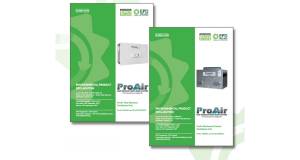 ProAir pioneers with EPDs for ventilation systems
ProAir pioneers with EPDs for ventilation systems -
 Let’s bring ventilation in from the cold
Let’s bring ventilation in from the cold -
 45,000 more Irish homes face radon risk, new maps reveal
45,000 more Irish homes face radon risk, new maps reveal -
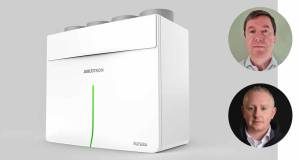 ProAir retooling for the future
ProAir retooling for the future -
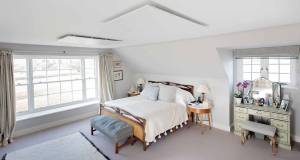 Ecomerchant now stocking Herschel Infrared heating products
Ecomerchant now stocking Herschel Infrared heating products -
 Ecological launch Inventer decentralised ventilation
Ecological launch Inventer decentralised ventilation -
 Poor ventilation a Covid risk in 40 per cent of classrooms, study finds
Poor ventilation a Covid risk in 40 per cent of classrooms, study finds -
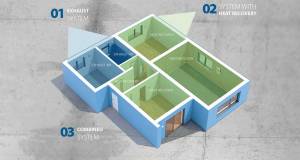 Efficient ventilation key to healthier indoor spaces – Partel
Efficient ventilation key to healthier indoor spaces – Partel -
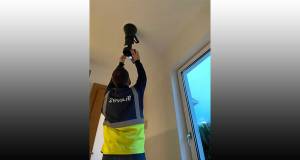 Evidence emerges of endemic ventilation regs breaches
Evidence emerges of endemic ventilation regs breaches -
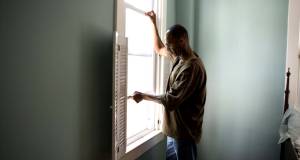 Window-opening unreliable for ventilation, study finds
Window-opening unreliable for ventilation, study finds -
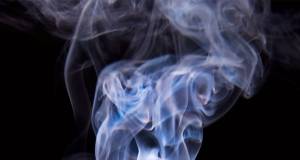 Study confirms “systematic inequalities” in indoor air pollution
Study confirms “systematic inequalities” in indoor air pollution

